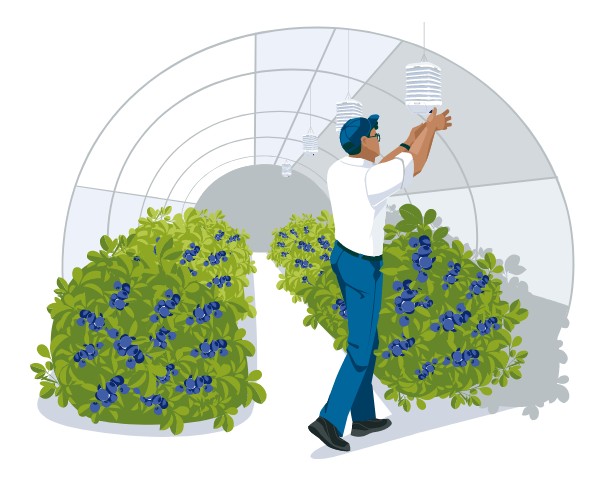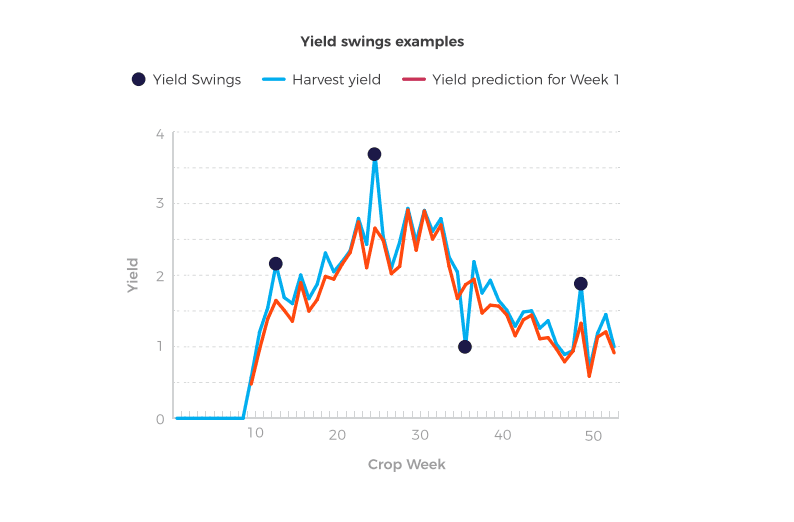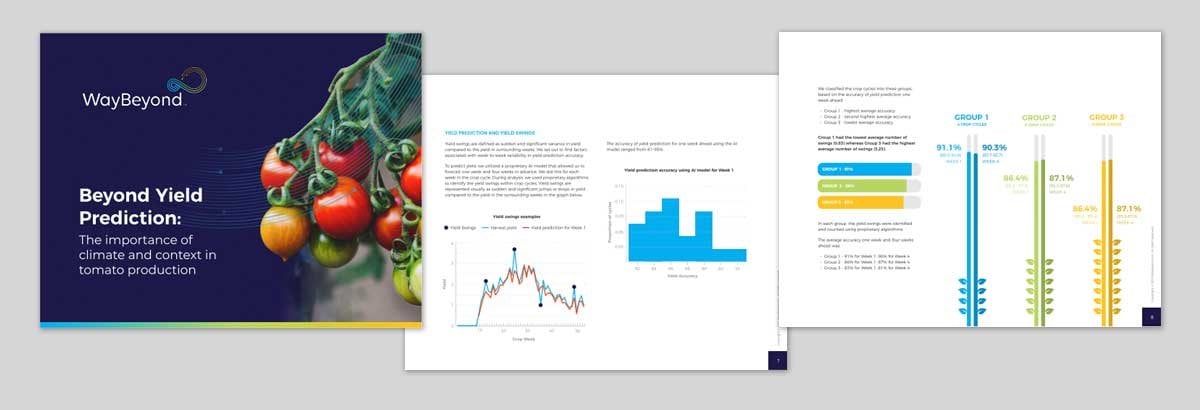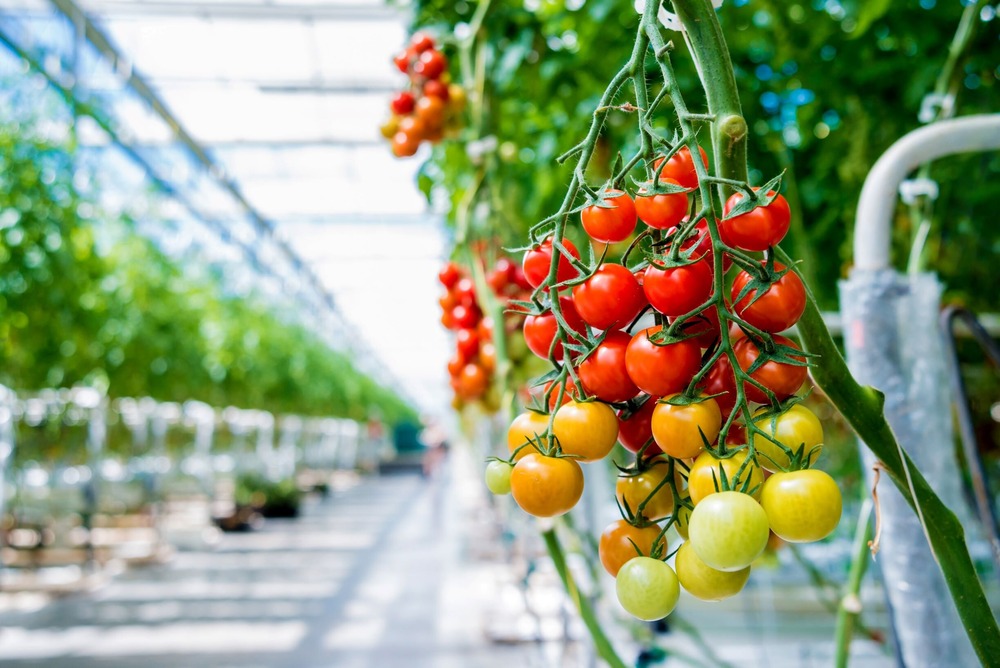
- CASE STUDY
- BLUEBERRY
- CROP MANAGEMENT
African Blue: real-time climate and plant health visibility improves crop management
With over 470 ha of blueberry production, African Blue needed to unify farm data to improve crop...
20.06.2023 | 3 min read
Accurately predicting tomato yields is crucial for tomato farm business operations and forecasting. However, traditional yield prediction models often fail to account for sudden spikes or dips in actual yield (called yield swings) which disrupt prediction accuracy. WayBeyond’s crop and data scientists conducted a study to shed light on the factors leading up to these swings and to propose a more holistic approach to yield prediction.
Tomatoes are one of the most widely grown fresh produce crops. While outdoor cultivation remains prevalent, many growers have turned to protected environments such as plastic houses, greenhouses, or glasshouses to ensure year-round production and mitigate unfavorable weather conditions, pests, and diseases. The controlled environments provide opportunities for manipulating climate, water, and light, resulting in significantly increased production compared to traditional methods.

Inaccurate predictions often result in significant over or under-production at harvest time – the financial impact of which remains one of the biggest issues for tomato growers. This is why accurately predicting yield is so important.
WayBeyond’s Dr. Tharindu Weeraratne, Director of Crop Science & Agronomy, says: “Accurately predicting yield is crucial for growers as it drives short-term response and long-term strategy. It helps steer crops towards desired production outcomes, provides certainty in available produce for sale, and aids in fulfilling supply contracts. However, consistently achieving high accuracy in yield prediction is a challenge due to the occurrence of yield swings, which can significantly impact business operations and forecasting.”
If traditional modelling fails to account for contributing factors that commonly lead to these yield swings, growers should consider whether chasing the “holy grail” of achieving high accuracy yield prediction is the right approach.
WayBeyond's study challenges this notion and instead seeks to identify and understand the biological and environmental events preceding yield swings. By adopting a more holistic approach to interpreting yield prediction, growers can improve their confidence in predicting yields to optimize production.
If traditional prediction modelling fails to account for contributing factors that commonly lead to yield swings, is aiming for high yield prediction accuracy the correct approach?
Instead of solely focusing on achieving high yield prediction accuracy, growers should consider a more holistic approach. One that will further assist them to improve production, manage losses, and negotiate better sales. A better method is to examine both the yield prediction data and the context around it, examining the recent environment, plant and phenology data, and the management practices.
WayBeyond conducted an experiment to demonstrate the value of this approach. Our study analyzed anonymized data from 20 tomato growing cycles in varied protected growing environments, using WayBeyond's proprietary digital data collection, analysis algorithms, and AI models to study the data encompassing plant genetics, environment, and crop management practices.
Dr. Mpatisi Moyo, Head of Artificial Intelligence, explains: “Our findings highlight the correlation between yield prediction accuracy and the occurrence of yield swings. We identified common patterns associated with low and high yield swings, including environmental factors like temperature and light, as well as biological indicators such as plant growth measurements and plant balance.”
Dr. Tharindu Weeraratne concludes: “This study emphasizes the importance of considering environmental and biological data alongside yield prediction models. By collecting and analyzing data on climate, crop development, and contextual factors, tomato growers can gain a comprehensive understanding of their growing environment and make informed decisions. We believe this approach allows for the anticipation and management of yield swings, leading to more consistent crop management and higher-quality data.”
WayBeyond's whitepaper on yield prediction opens the door to improved decision-making capabilities for tomato growers, providing them with the tools to anticipate yield swings, interpret yield predictions with greater accuracy, and mitigate risks to their crops and business. By embracing a more holistic approach to yield prediction, growers can maximize their yield potential and minimize financial and produce losses.


Lorem ipsum dolor sit amet, consectetur adipiscing elit. In fringilla ultricies lacinia. Nulla rhoncus ac sapien eget efficitur.

With over 470 ha of blueberry production, African Blue needed to unify farm data to improve crop...

Read our team's report on the 2023 Morocco Berry Conference, held in Agadir.

Frost devastates blueberry crops, leading to significant economic losses. By harnessing digital...
Champions of crop management.
Giving protected growers the power to make better crop management decisions and optimize crop outcomes.
Solutions
Customers
©2024 WayBeyond. All Rights Reserved.